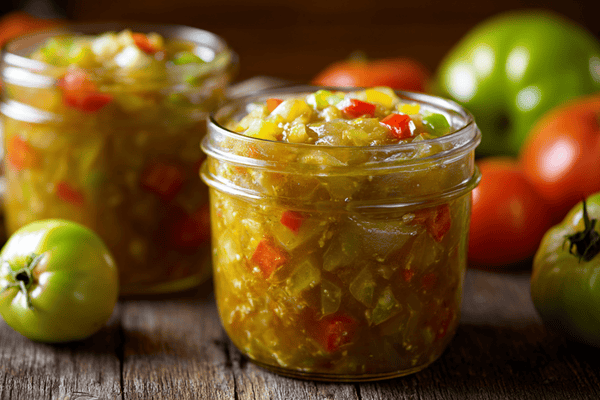
Introduction
Sushi is one of the most famous Japanese dishes worldwide, and nigiri sushi is perhaps the most well-known and beloved. Nigiri sushi is a simple but elegant dish that features a small ball of seasoned rice topped with a piece of fresh fish, shellfish, or other seafood.
The combination of tender, flavorful fish and perfectly seasoned rice is what makes nigiri such a delicious and satisfying meal. In this guide, we'll explore the history and origins of nigiri sushi, the ingredients used in its preparation, and the steps involved in making this iconic dish. We'll also provide tips for enjoying nigiri sushi and some frequently asked questions about this beloved Japanese cuisine.
For those interested in exploring more Japanese cuisine, we also have guides on what is teriyaki, what is tofu, and what is teppanyaki.
The Origins of Nigiri Sushi

Nigiri sushi is a traditional Japanese dish with a rich history. According to food historian Naomichi Ishige in his book "The History and Culture of Japanese Food" (2001), the origins of nigiri can be traced back to the Edo period in Japan, which lasted from 1603 to 1868. During this time, sushi began to evolve from earlier forms into a new style in the bustling city of Edo (modern-day Tokyo).
Food historians note that nigiri sushi emerged during this period as a distinct style. While earlier forms of sushi involved fermented fish with rice (called narezushi), nigiri featured fresh fish served on top of seasoned rice. Historical records indicate that this style became popular in the Edo region and gradually spread to other parts of Japan.
The Ingredients of Nigiri Sushi
The key ingredients of nigiri sushi are rice, fish or other seafood, and a few simple seasonings. Let's examine each of these components more closely.
Rice

The rice used in nigiri sushi is a special short-grain Japanese variety called "sushi rice" or "sumeshi." Wash thoroughly for 2 cups of sushi rice until water runs clear (usually 3-4 rinses). Cook with 2¼ cups of water in a rice cooker or pot. While the rice is still warm, season it with a mixture of 3 tablespoons rice vinegar, 1½ tablespoons sugar, and one teaspoon salt that has been heated until dissolved. This gives the rice a slightly sweet and tangy flavor. The rice is then gently folded to incorporate the seasoning, cooled to room temperature, and formed into small oblong shapes for the base of the nigiri.
For more information on Japanese cooking ingredients, you might be interested in our guides to stocking a Japanese pantry with sake and other essential ingredients.
Fish

The fish used in nigiri sushi can vary depending on the region and the season. Some of the most common types of fish used in nigiri include tuna, salmon, yellowtail, mackerel, and eel. The fish is typically sliced into thin pieces about 1/4 inch thick and then placed on top of the rice ball.
For home preparation, the FDA recommends freezing fish at -4°F (-20°C) or below for at least 7 days to kill potential parasites. Always purchase sushi-grade fish from reputable suppliers who follow proper handling procedures. Keep raw fish refrigerated at 40°F (4°C) or below and consume within 24 hours of purchase.
Seasonings
In addition to the rice and fish, nigiri sushi is often seasoned with simple ingredients to enhance the flavor. Some common seasonings include:
-
Wasabi: A spicy green paste made from Japanese horseradish. In traditional nigiri, a small amount is placed between the rice and fish rather than mixed into soy sauce. Learn more about wasabi in our Japanese pantry guide.

-
Soy sauce: Used as a dipping sauce for sushi. High-quality, low-sodium soy sauce is preferred.

-
Gari: Pickled ginger is served as a palate cleanser for different types of sushi.

-
Nori: Thin sheets of dried seaweed are sometimes used to wrap around nigiri or as a small strip to secure toppings to the rice.

Breakdown of Nigiri Toppings
Raw Preparations
| Type | Description |
|---|---|
| Maguro (Tuna) | Clean, mild, slightly sweet flavor with a meaty texture |
| Sake (Salmon) | Rich, buttery flavor with a slightly sweet taste |
| Hamachi (Yellowtail) | Buttery, mild taste with a clean finish |
| Saba (Mackerel) | Bold, savory, distinctive flavor with a rich, oily texture |
| Uni (Sea Urchin) | Creamy, briny, sweet delicacy with a distinctive ocean flavor |
| Amaebi (Sweet Shrimp) | Sweet, delicate, clean taste with a tender texture |
| Ika (Squid) | Mild, subtle, slightly sweet flavor with a firm texture |
| Hotate (Scallop) | Sweet, delicate, buttery taste with a creamy texture |
| Tobiko (Flying Fish Roe) | Crunchy, salty eggs with a distinctive pop |
| Ikura (Salmon Roe) | Burst of salty, oceanic flavor in brightly colored eggs |
Cooked Preparations
| Type | Description |
|---|---|
| Unagi (Eel) | Sweet, rich, savory flavor, often with sweet sauce |
| Ebi (Shrimp) | Sweet, light, clean taste with a firm texture |
| Tako (Octopus) | Mild, subtle flavor that's faintly sweet with a chewy texture |
| Kani (Crab) | Sweet, mild, slightly briny flavor with a delicate texture |
| Tamago (Egg) | Sweet, light, custard-like flavor in a fluffy omelette |
| Avocado | Creamy, buttery, mild flavor that provides a rich texture |
This list includes various fish and toppings that can be used to make nigiri sushi. Each type has its unique flavor and texture, making nigiri sushi a versatile and customizable dish that can be enjoyed in many different ways.
The Preparation of Nigiri Sushi
Preparing nigiri sushi requires a delicate touch and a keen eye for detail. Here are the steps involved in making this iconic dish.
Cooking the Rice
- Measure 2 cups of short-grain Japanese rice and rinse thoroughly in cold water 3-4 times until the water runs clear.

- Cook the rice with 2¼ cups of water in a rice cooker or pot until tender (about 15-20 minutes).

- While the rice is cooking, prepare the seasoning mixture by combining 3 tablespoons rice vinegar, 1½ tablespoons sugar, and 1 teaspoon salt in a small saucepan.

- Heat the mixture until the sugar and salt dissolve completely, then let cool.
- When the rice is done, transfer it to a large wooden bowl (a traditional hangiri, if available) and pour the seasoning mixture over it.

- Gently fold the rice with a rice paddle or wooden spoon using a cutting motion, being careful not to mash the grains.

- Fan the rice as you mix to help it cool and develop a glossy appearance.

- Cover with a damp cloth and let cool to room temperature (but not cold).

Preparing the Fish
- Begin with sushi-grade fish properly frozen according to FDA guidelines to kill parasites.
- Use a sharp knife (preferably a sashimi knife) to slice the fish against the grain into thin pieces about 1/4 inch thick.
- The fish slices should be about 2 inches long and 1 inch wide, proportional to the rice ball they will top.
- Keep the prepared fish chilled until ready to use.
For more guidance on fish preparation, you might want to explore our articles on can you eat salmon skin and discover how to tell if beef is bad for general protein freshness guidance.
Forming the Nigiri
- Wet your hands with water and a few drops of rice vinegar to prevent sticking.
- Take about 20g (2 tablespoons) of prepared sushi rice and gently compress it in your palm.
- Form an oblong shape about 2 inches long and 1 inch wide with slightly rounded edges.
- Apply a small amount of wasabi to the center of the rice ball (optional).
- Place a slice of fish on top of the rice, draping it over so it conforms to the rice's shape.
- Using your thumb and forefinger, gently press the sides of the fish against the rice to secure it.
- Flip the nigiri over and give it a gentle press on top to ensure the fish adheres to the rice.
- The final nigiri should have a slight curve, resembling a small boat.
Serving the Nigiri
Nigiri sushi is typically served in pairs or sets of two to five pieces. The sushi should be arranged on a clean plate or traditional wooden board and served with a small soy sauce dish, a dab of wasabi, and pickled ginger on the side. Some restaurants also provide a wet hand towel (oshibori) for cleaning hands before eating.
If you're interested in making other Japanese dishes, you might want to explore our articles on what is sashimi, what is gyoza, or discover what is a bento meal.
Tips for Enjoying Nigiri Sushi
Nigiri sushi is a delicacy meant to be savored and enjoyed slowly. Here are some tips for getting the most out of your nigiri experience:
Use Proper Chopstick Technique
Nigiri sushi is traditionally eaten with chopsticks. Pick up the nigiri by its sides, turn it upside down, and lightly dip the fish (not the rice) in soy sauce. The rice should never touch the soy sauce, as it will absorb too much and fall apart. In casual settings, eating nigiri with your hands is also acceptable.
If you're new to using chopsticks, check out our guide on how to hold chopsticks for proper technique.
Observe Proper Etiquette
In many sushi establishments, nigiri is designed to be eaten in one bite to experience all flavors together. If the piece is too large, it's generally considered better etiquette not to place a partially eaten piece back on your plate.
Start with Milder Flavors
If you're new to nigiri sushi, start with milder flavors like tuna (maguro) or salmon (sake) before moving on to stronger, more intense flavors like mackerel (saba) or sea urchin (uni).
Don't Overdo the Wasabi
Wasabi is a potent condiment that can quickly overwhelm the delicate flavors of the fish. A small amount is traditionally placed between the rice and fish during preparation. If adding more, use it sparingly, or skip it altogether if you're not a fan of spicy foods.
Sip Green Tea Between Bites
Green tea is commonly served with sushi and can help refresh your palate between different types of nigiri. Many sushi establishments provide green tea specifically for this purpose.
Frequently Asked Questions about Nigiri Sushi
Q: What is the difference between nigiri and sashimi?
A: Nigiri sushi is a type of sushi that features a small ball of seasoned rice topped with a piece of fresh fish or seafood. Sashimi, on the other hand, is a dish that consists only of thinly sliced raw fish or seafood and does not include any rice. If you want to learn more about the differences between nigiri and sashimi, check out our related article: Nigiri vs Sashimi: What's the Difference?
Q: Is nigiri sushi safe to eat?
A: Nigiri sushi can be safe to eat as long as it is prepared and handled correctly. For commercial establishments, the FDA requires fish to be frozen at -4°F (-20°C) or below for at least 7 days to kill potential parasites. When dining out, choose reputable restaurants with good health inspection records. For home preparation, always purchase sushi-grade fish from trusted suppliers, maintain proper refrigeration (below 40°F), and consume within 24 hours of purchase.
Q: Can I make nigiri sushi at home?
A: Yes, you can make nigiri sushi at home with a few simple ingredients and tools. You will need sushi rice, fresh sushi-grade fish or seafood, wasabi, soy sauce, and essential kitchen tools such as a rice cooker, a sharp knife, and a cutting board. Follow our preparation guide above, and with some practice, you can create restaurant-quality nigiri at home.
For best results, you'll want to use the right knives for the job. Check out our guides on what knife is best for sushi and all about sushi knives.
Q: How much rice should I use for each piece of nigiri?
A: For traditional nigiri sushi, use approximately 20g (about 2 tablespoons) of prepared sushi rice per piece. The rice ball should be about 2 inches long and 1 inch wide, providing the perfect proportion to the fish topping.
Q: How do I select sustainable fish for sushi?
A: To select sustainable fish, consult resources like the Monterey Bay Aquarium's Seafood Watch guide or the Marine Stewardship Council certifications. Look for fish labeled as sustainably caught or farmed, and ask your fishmonger about the source of their products. Popular sustainable options include MSC-certified salmon, U.S. farmed shrimp, and pole-caught albacore tuna.
For more information on selecting quality fish, read our article on what is sushi grade and learn about the importance of a fishmonger.
Conclusion
Nigiri sushi represents an integral part of Japanese culinary tradition. This preparation method showcases the natural flavors of fresh fish and seasoned rice, creating a distinctive dining experience that has become popular internationally.
Understanding the background, ingredients, and preparation techniques involved in nigiri helps to appreciate the skill required to create good sushi. Whether trying nigiri at a restaurant or making it at home, taking time to notice the flavors and textures can enhance your enjoyment.
Many sushi enthusiasts find that learning about proper serving methods and traditional accompaniments adds to their appreciation of this Japanese culinary tradition.
If you're interested in exploring more Japanese cuisine and culture, check out our articles on the dos and don'ts when eating a Japanese meal, how to make a traditional Japanese breakfast, and the secrets of the healthy Japanese diet.



